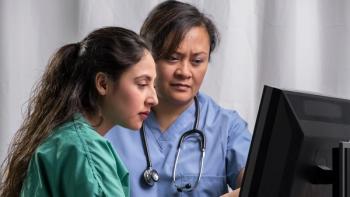
- February 2021
- Volume 15
- Issue 1
Cancer Prevention: Why, Who, When, Where, How

Oncology nurses play a crucial role in cancer prevention.
While cancer continues to be a leading cause of death globally, oncology nursing is constantly evolving and expanding to meet the emerging needs, including cancer prevention.
Why: It is estimated that 4 in 10 cancers are preventable.1 Tobacco and alcohol use, obesity, ultraviolet radiation, HPV, and a lack of physical activity may lead to cancer. Cancer survivors are more likely to experience ongoing quality-of-life issues and greater incidence of chronic disease.2
Who: Oncology nurses interact daily with patients with cancer. Many of these people will become survivors and join the fast-growing group of individuals with a lack of precedent, necessitating evidence-based prevention and research aimed at prevention of recurrence and secondary malignancies. Nurses also meet with patients’ families who are undiagnosed with a malignancy, but are aware of risk factors and are willing to modify their behaviors. This group will have experienced the fear and threat to health vicariously.
When: The timing of the discussion and continued teaching must be conducive to learning. At diagnosis, the individual and family are overwhelmed by prognosis, a fear of underlying mortality, and head-spinning treatment plan details. Active treatment has been identified as the time when patients are most receptive.3 Follow-up visits after treatment also provide a fantastic opportunity for reiteration about cancer prevention.
Where: Patients may not approach oncology nurses for guidance on prevention. Nurses must be mindful of this and broach the topic. Medical oncology clinics, infusion centers, survivorship clinics, genetic counseling centers, and community cancer clinics are all excellent choices for prevention, screening, and teaching.
How: A community outreach center with an active social media presence can be key to helping promote a healthy lifestyle. An interdisciplinary approach that includes primary care providers and resources for tobacco cessation, diabetes education, and obesity prevention is crucial. Dietary concerns can skyrocket during the treatment. To quell their concerns, an ADA-recommended diet can be initiated during active treatment and maintained even after completion. Where available, referrals to fitness and wellness centers are appropriate.
There is no universal solution to prevent cancer. Results are dependent on a variety of factors, but the goal is to raise awareness and recommend lifestyle modifications that are reliable, evidence-based, and sustainable. The necessary follow-up and reinforcement will
continue to be a challenge as we develop new strategies specific to individuals from all walks of life.
References:
1. Cowens-Alvarado R, Sharpe K, Pratt-Chapman M, et al. Advancing survivorship care through the National Cancer Survivorship Resource Center: developing American Cancer Society guidelines for primary care providers. CA Cancer J Clin. 2013;63(3):147-150. doi:10.3322/caac.2118
2. Demark-Wahnefried W, Aziz NM, Rowland JH, Pinto BM. Riding the crest of the teachable moment: promoting long-term health after the diagnosis of cancer. J Clin Oncol. 2005;23(24):5814-5830. doi:10.1200/JCO.2005.01.230
3. Karvinen K, Bruner B, Truant T. The teachable moment after cancer diagnosis: perceptions from oncology nurses. Oncol Nurs Forum. 2015;42(6):602-609 doi: 10.1188/15.ONF.602-609
Articles in this issue
almost 5 years ago
Telehealth: Hope or Hype?almost 5 years ago
Oncology Nurses Can Help Prevent the Preventablealmost 5 years ago
COVID-19 Vaccine and Cancer: What Patients Ought to Knowalmost 5 years ago
Adolescent and Young Adult Patients Face Unique Needs, Challengesalmost 5 years ago
Open Discussions Help Nurses Introduce Integrative ServicesNewsletter
Knowledge is power. Don’t miss the most recent breakthroughs in cancer care.































































































